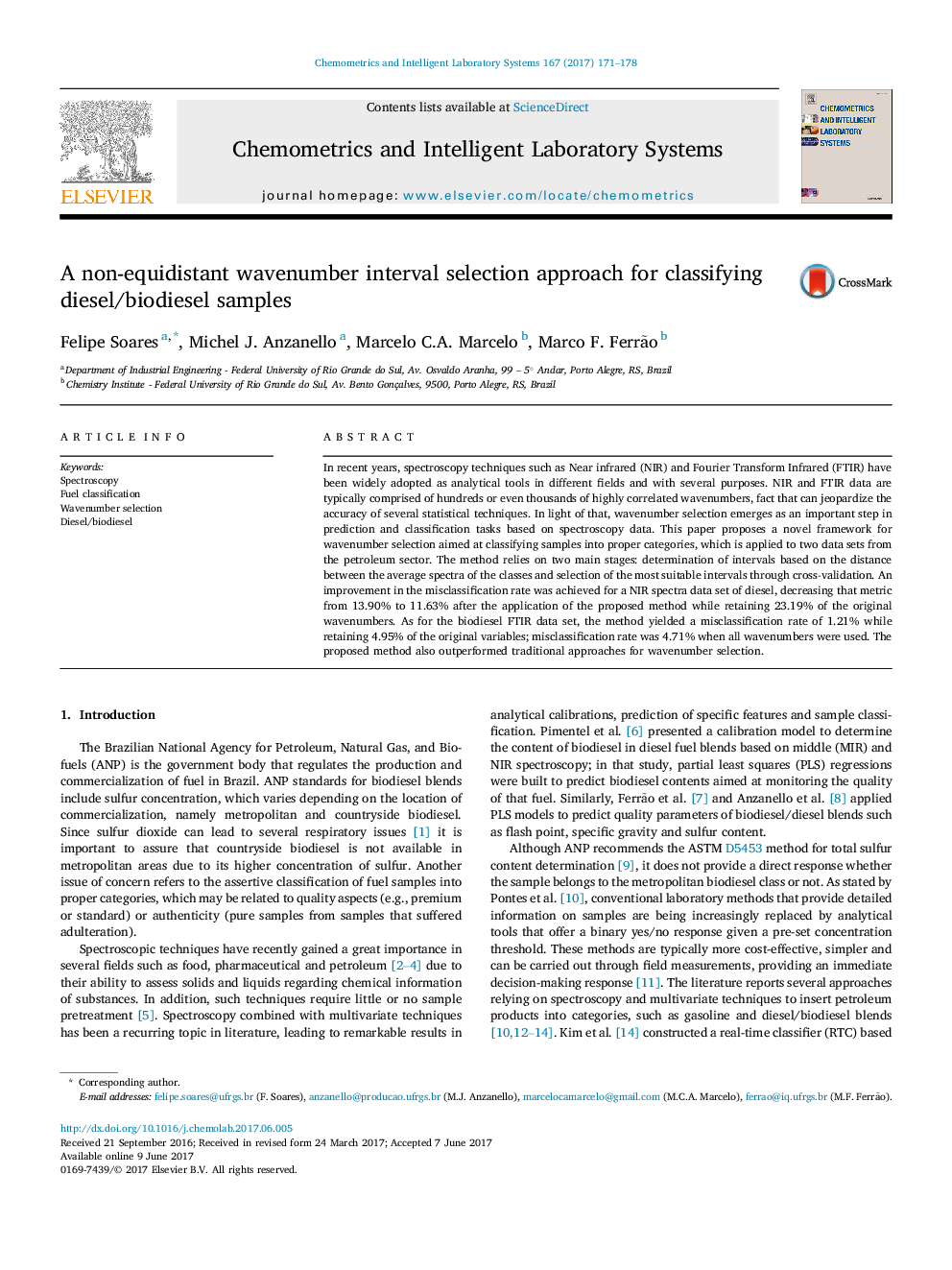| Article ID | Journal | Published Year | Pages | File Type |
|---|---|---|---|---|
| 5132184 | Chemometrics and Intelligent Laboratory Systems | 2017 | 8 Pages |
â¢A non-equidistant wavenumber interval selection is proposed for classification.â¢The method is based on the distance between the average spectra of two classes.â¢Two datasets of diesel and biodiesel were used in this study.â¢Decrease in the misclassification rate was achieved after interval selection.â¢The method outperformed traditional interval selection approaches.
In recent years, spectroscopy techniques such as Near infrared (NIR) and Fourier Transform Infrared (FTIR) have been widely adopted as analytical tools in different fields and with several purposes. NIR and FTIR data are typically comprised of hundreds or even thousands of highly correlated wavenumbers, fact that can jeopardize the accuracy of several statistical techniques. In light of that, wavenumber selection emerges as an important step in prediction and classification tasks based on spectroscopy data. This paper proposes a novel framework for wavenumber selection aimed at classifying samples into proper categories, which is applied to two data sets from the petroleum sector. The method relies on two main stages: determination of intervals based on the distance between the average spectra of the classes and selection of the most suitable intervals through cross-validation. An improvement in the misclassification rate was achieved for a NIR spectra data set of diesel, decreasing that metric from 13.90% to 11.63% after the application of the proposed method while retaining 23.19% of the original wavenumbers. As for the biodiesel FTIR data set, the method yielded a misclassification rate of 1.21% while retaining 4.95% of the original variables; misclassification rate was 4.71% when all wavenumbers were used. The proposed method also outperformed traditional approaches for wavenumber selection.
